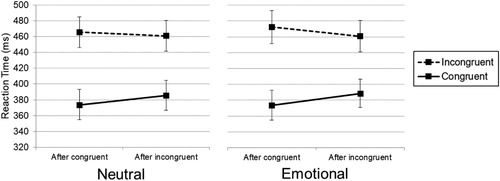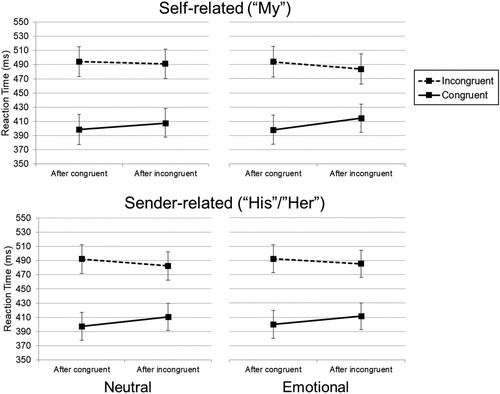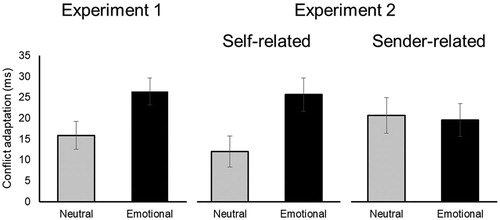Figures & data
Table 1. Mean scores and standard deviations of valence, arousal, concreteness, frequency and number of letters of each word group.
Table 2. Behavioral data of Experiment 1 (N = 55).
Figure 2. Reaction times as a function of previous congruency (x-axis) and current congruency (lines) for neutral (left) and emotional (right) previous-trial words. The error bars indicate the 95% confidence intervals of the between-subject standard errors.

Table 3. Behavioral data of Experiment 2 of self-related blocks (N = 54).
Table 4. Behavioral data of Experiment 2 of sender-related blocks (N = 54).
Figure 3. Reaction times as a function of previous congruency (x-axis) and current congruency (lines) for neutral (left panels) and emotional (right panels) previous-trial words, separate for self-related blocks (top panels) and sender-related blocks (bottom panels). The error bars indicate the 95% confidence intervals of the between-subject standard errors.



